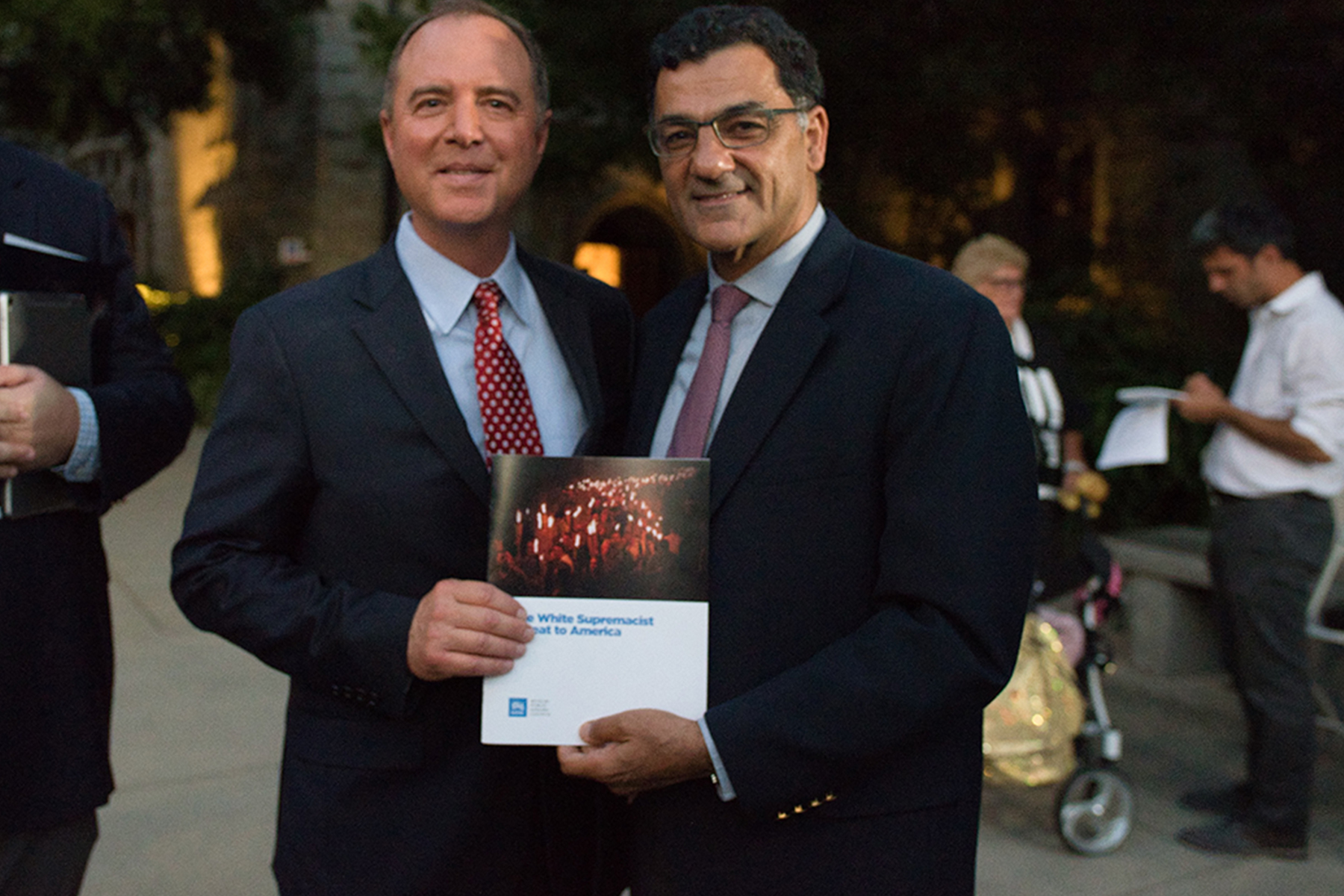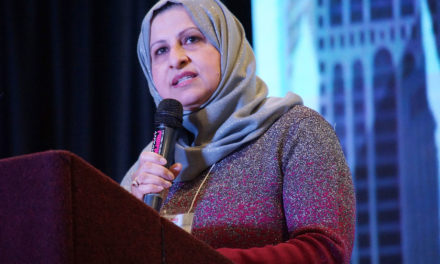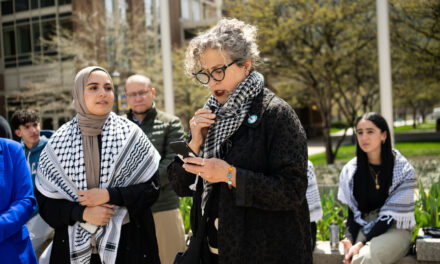© Photo
Courtesy of the Muslim Public Affairs Council (MPAC)
Congressman Adam Schiff (D-CA) with Salam Al-Marayati (right), president of the Muslim Public Affairs Council
A White Paper recently published by the Muslim Public Affairs Council (MPAC) reveals a stark difference between the actual cause of much of the mass violence currently roiling the United States and the labels the Trump administration chooses to apply to it.
MPAC was established in 1988 and has offices in Washington D.C. and Los Angeles. It released the White Paper, titled “The White Supremacist Threat to America,” on July 31, just days before Patrick Crusius shot 22 people, most of them Hispanics, at a Wal-Mart in El Paso, Texas.
In a manifesto posted on 8chan immediately prior to the shooting, Crusius said he acted in response to a “Hispanic invasion” of the United States.
President Trump has ascribed the causes of this kind of mass violence to mental illness and violent videogames, just as much of his Christian fundamentalist base decries it as evidence of a bleak and godless world. Trump has sidestepped questions about the way in which his own speeches and Twitter posts, where he has frequently spoken of an immigrant “invasion,” were echoed in Crusius’s manifesto.
MPAC’s White Paper provides evidence that a primary cause of shootings like that in El Paso is not mental illness or violent video games. In addition to the widespread availability of assault weapons in the U.S, the cause is an international terrorist movement, leaderless yet coordinated, operating in Europe and America and spreading its hateful and violent intentions through social media and internet sites like 8chan and The Daily Stormer.
Salam Al-Marayati, president of MPAC, said that “for too long” white supremacist violence has been considered “a series of isolated incidents.” Furthermore, said Marayati, “The higher you get in the Trump administration, the less movement there is on this issue.” Instead, “there is pushback and denial and confusion.”
However, according to Marayati, law enforcement at local levels is well aware of the white supremacist threat. “It’s clear that white nationalism has become a number one priority,” he said. “Unfortunately, the funding does not reflect that yet, but there is definitely a sense of urgency among local law enforcement and some members of the FBI,” although, Marayati said, “we need to have more conversation on how to deal with that threat.”
Among the White Paper’s key findings is that white supremacy is “not just a belief system premised on racist hatred of non-whites,” but a “political project” whose ultimate goal is a “white ethno-state.” The White Paper cites historian Kathleen Belew, who says the “inherently anti-American project” of white supremacy is focused on “trying to overthrow the federal government and create a united white polity that will then eventually eradicate people of color in the country, and in the world.”
The MPAC White Paper presents clear evidence of international coordination, quoting a New York Times article that alleges, for example, that the Christchurch, New Zealand shooter, Brenton Tarrant, belonged to a “network of white extremists” that is global in scale and “can be understood, and even classified, as international terrorism” and that Muslims and Jews continue to be “centrally situated in white supremacist narratives as the source of societal ills.”
The White Paper also shows how these “white supremacist narratives” are being taken up by the conservative national media. Tucker Carlson on Fox News has become increasingly flagrant in his advocacy of white nationalist ideology. “The messaging on shows such as Carlson’s [is] regularly picked up by Donald Trump, and other conservative politicians, who repeat these talking points to a wider audience,” the White Paper says. White supremacist groups have actually “praised this process as ‘normalizing’ their message.”
However, the MPAC White Paper acknowledges that while “Republicans have become increasingly concerned with immigration, as have conservative voters at large” it is “unlikely that this concern with immigration among Republicans stems from a commitment to white supremacy.” However, the increased media and political spotlight on immigration has “nonetheless coincided with an increase in both violence toward immigrant communities and xenophobic rhetoric.”
The violence in El Paso was directed at the group that Donald Trump has focused on most recently, but it must be remembered that from early in his run for the presidency, he targeted Muslims with both words and deeds.
The White Paper shows that, since 2015, “then-candidate Donald Trump” said he “would strongly consider” either shutting down or “surveilling mosques” and said he felt the need for a “national Muslim registry.” In 2016, as the election drew closer, Trump told a crowd, “Islam hates us.”
And of course, practically Trump’s first action upon achieving the Oval Office was to sign the Executive Order popularly known as the Muslim Ban, in which residents of seven, randomly selected Muslim-majority nations were not allowed entry into the United States, some after they had already boarded airplanes headed here.
The White Paper demonstrates “a strong connection between anti-Muslim rhetoric from politicians like Trump and increases in violent hate crimes toward American Muslim communities.” Citing the Extremist Crime Database, the White Paper asserts that 166 out of 217 “ideologically motivated homicide incidents involving far-right extremists” in the last 30 years, “were committed by white supremacists against members of minority communities.” In the six-year period from 2011 through 2017, “there were nearly 350 white extremist terrorism attacks across Europe, North America and Australia.” And, in that same period, “white supremacist terrorism accounted for roughly one-third of all terrorist attacks in the United States.”
And yet, federal responses to these acts of terrorism continue to be out of step with contemporary reality. Currently, not a single official at DHS is dedicated to investigating “white extremist violence” the White Paper says. The FBI and DOJ has “collapsed their system of eleven different kinds of domestic terrorism classifications, including one categorization specifically for white supremacist violence,” into four general categories: “racially motivated violent extremism; anti-government and anti-authority extremism; animal rights and environmental extremism; and abortion extremism.”
“Since the last election there had been a deliberate attempt to gear [law enforcement activities to] addressing terrorism as a foreign threat,” said Pardeep Kaleka, executive director of the Greater Milwaukee Interfaith Council and co-founder of Serve 2 Unite, a group that combats white nationalism through education and outreach. “That is an extension of the Patriot Act.” However, Kaleka said, “The domestic threat is far greater than anything from foreign soil.”
Another problem with the federal response is its lack of transparency. Currently, the White Paper says, “the federal government is not required to disclose specific information relating to their investigations into terrorist activity.” To that end, MPAC’s recommendations include a comprehensive study of hate crimes and better training for law enforcement in identifying them. The White Paper recommends passage of the Khalid Jabara and Heather Heyer No Hate Act, which would “incentivize greater hate crimes reporting and data collection among federal government agencies as well as state and local governments.”
In addition, MPAC recommends “greater transparency from the DOJ’s counter-terror operations” including the FBI terror watch list.
This is necessary because, “Communities of color feel they are being targeted by white nationalists and at the same time scrutinized and at times even harassed by the federal government,” Salam Al-Marayati said.
WMJ reached out to the Milwaukee division of the FBI for comment on this article but received no response.
After the White Paper’s release, Marayati participated in a panel discussion with California congressman Adam Schiff, a frequent critic of the Trump administration, who said at the event, “it shouldn’t take a mass shooting to spur action . . . This is the time for each of us to dig deep and ask ourselves: ‘Where can I do good?’”
The full text of MPAC’s White Paper is available by clicking here: “The White Supremacist Threat to America”














